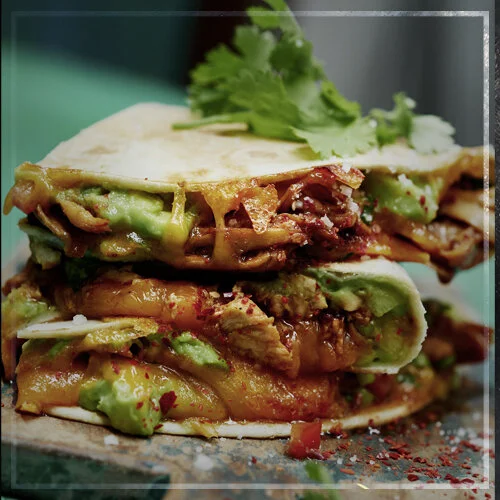.... JAPAN – PART II – RAMEN AND THE ART OF SLURPING .. JAPAN – PART II – Ramen und die Kunst des Schlurfens ....
.... SLURP, SLURP, SLURP. .. Schlurf, schlurf, schlurf. ....
....
Welcome to the ramen shop. Please come on in and forget all the table manners that your mother taught you.
Here, slurping isn’t frowned upon, it’s fashionable.
The person sitting next to me demonstrates this. Fishing around with his chopsticks in his soup he pulls out a large tangle of noodles, and bringing it to his mouth he inhales it with loud sucking noises. I give it a try.
And embarrass myself. Of course.
I burn my tongue and scatter soup in a 1.5 m radius. I try to wipe everything up with a napkin. You’d be proud of me, mum.
I underestimated the slurping, this noodle soup is bloody hot and without air enhancement it can easily cause third degree burns.
I take a sip of iced water and glance around. To call this place a restaurant would be a little exaggerated, definitely by Western standards.
..
Willkommen in einem Ramen-Laden, bitte kommt rein und vergesst alles, was eure Mutter euch je über Essens-Manieren beigebracht hat.
Denn hier ist Schlurfen nicht verpönt, sondern sogar angesagt.
Mein Tischnachbar macht es mir vor: Stäbchen in die Suppe, einen grossen Schopf Nudel rausfischen, an den Mund halten und alles mit möglichst kräftigem Sauggeräusch inhalieren. Ich probier´s und mach es ihm nach.
Und blamiere mich. Natürlich.
Ich verbrenne mir die Zunge, verteile Suppe in Umkreis von 1,5 m und versuche im Nachhinein mit der Serviette alles wieder trocken zu wischen. Mutti, du wärst stolz auf mich.
Dabei ist das Schlurfen wichtig, diese Nudelsuppe ist verdammt heiß und ohne die notwendige Luftmischung zu Verbrennungen dritten Grades durchaus fähig.
Ich nehme einen Schluck Eiswasser und gucke mich kurz um. Diese Bude als Restaurant zu bezeichnen wäre ein bisschen übertrieben, auf jeden Fall für westliche Verhältnisse.
....
....
At home restaurants usually have a large selection of dishes: soup, pasta, fish, meat, salad.
It’s a little different in Japan – restaurants often specialise in one dish. Here you choose a restaurant for what you want to eat and not the other way around.
I absolutely wanted to try ramen, so I headed to Ebisu where I could find places to choose from. Ebisu is a popular nightlife district in Tokyo. It’s teaming with small shops, alleyways and excessive billboards.
When people talk about small and cramped in Japan, they literally mean it. In this particular ramen shop the only seats are at the counter which fits a maximum of 6-7 guests. On the next street a tempura shop and two tiny yakitori stalls, a mouth-watering aroma emanating from their grills, are cramped together within 15 m.
..
Bei uns geht man ins Restaurant und man hat meistens eine grosse Auswahl an Gerichten: Suppe, Nudeln, Fisch, Fleisch, Salate.
In Japan läuft es anders. Man ist überwiegend auf ein Gericht spezialisiert. So fällt hier die Wahl auf ein Lokal, je nachdem worauf man Lust hat, und nicht umgekehrt.
Ich wollte unbedingt Ramen probieren, bin also nach Ebisu gefahren und habe mir dort was ausgesucht. Ebisu ist ein bekanntes Ausgehviertel in Tokio. Hier wimmelt es nur von kleinen Läden, engen Seitenstrassen und überladenen Leuchtreklamen.
Wenn man in Japan von klein und eng spricht ist es wörtlich gemeint. In diesem Ramen-Laden ist nur am Tresen Platz und das auch höchstens für 6-7 Gäste. In der Straße quetschen sich in den nächsten 15 m ein Tempura-Laden und zwei winzige Yakitori-Buden, die mit ihren Grills die Abendluft zu einer Wasser-im-Mund-zusammenlaufenden Angelegenheit machen.
....
....
As the Indian air smells of spices and the Italian of the salty sea breeze, the air in Tokyo smells of barbecue.
But back to ramen.
This noodle soup actually comes from China. Up to the 1950s it was called Shina soba, which means China noodle, and it was especially appreciated by Japanese soldiers returning home from China.
Over the years it evolved into a truly iconic Japanese dish and today you can enjoy it inevery city in thousands of variations.
The noodles themselves have variations, they can be cut thick or thin, and be short or long.
What they all have in common is the ingredient kansui: a special mineral water that givesthe noodles their taste and their yellow colour.
The variations in the broth are the main reason for the different tastes. There are 4 types:
shoyu ramen, miso ramen, shio ramen und tonkotsu ramen.
..
Denn wenn in Indien die Luft nach Gewürzen und in Italien nach salziger Seeluft riecht, riecht sie in Tokio ganz eindeutig nach Gegrilltem.
Aber zurück zu den Ramen.
Eigentlich kommt diese Nudelsuppe ursprünglich aus China, bis in die 50er hieß sie auch Shina Soba, also China-Nudel, und wurde vor allem von den aus China zurückkehrenden japanischen Soldaten geschätzt.
Mit den Jahren mauserte sie sich aber zur echten japanischen Food-Ikone und ist heutzutage in jeder Stadt zu genießen - und das in abertausenden Varianten.
Die Nudeln können varieren, sie können dick oder dünn geschnitten, kurz oder lang sein. Was sie alles verbindet ist die Zutat Kansui: ein besonders mineralhaltiges Wasser, das den Nudeln ihren Geschmack und ihre gelbe Farbe verleiht.
Was aber den richtigen Unterschied macht, ist die Brühe. Es gibt 4 Sorten: Shoyu-Ramen, Miso-Ramen, Shio-Ramen und Tonkotsu-Ramen.
....
....
The most commonly known type – miso – is made out of a paste of fermented soya beans. Shio is seasoned with salt and often fish and vegetables, and tonkotsu is eaten mostly in southern Japan and is made from pork bones. The most common variation in Tokyo is shoyu – which is refined with the use of soya sauce and sometimes dashi.
..
Die uns eher bekannte Variante - Miso - basiert auf einer Paste aus fermentierten Sojabohnen. Shio ist mit Salz sowie häufig Fisch und Gemüse gewürzt, Tonkotsu trifft man meist in Süd Japan an und wird aus Schweineknochen hergestellt. Die in Tokio wohl verbreiteste Abwandlung nennt sich Shoyu - sie wird mit Soja-Sauce und manchmal Dashi verfeinert.
....
....
I ask the shopkeeper for his recommendation. He points to shoyu ramen with seaweed, onions, shiitake mushrooms and braised pork cheeks, and tries to explain to me in broken English that this variation is the perfect balance between surf and turf. A Yin and Yang between the salty broth and the sweet pork.
It’s practically an ode to the umami taste.
“Darling,” I want to say to him, “you already convinced me when you said ‘braised pork cheeks’”.
And that’s how I ended up sitting here, surrounded by joyful slurping noises and contemplating if I should eat the ingredients and the broth separately. I scrutinise the guests somewhat more closely and see that, yes, they are bloody messy as well! HA!
I order another small bottle of warm sake and once again reach for my chopsticks. Back into the battle!
..
Ich frage meinen Wirt nach der Empfehlung des Hauses. Er zeigt auf Shoyu-Ramen mit Seetang, Lauchzwiebeln, Shiitake und geschmorten Schweinebäckchen und versucht mir in gebrochenem Englisch zu erklären, dass diese Sorte die perfekte Balance aus See und Erde ist. Aus der salzigen Brühe und dem süßlichen Schweinefleisch, aus Yin und Yang.
Praktisch eine Ode an den Umami-Geschmack.
„Schätzchen“, will ich ihm sagen, „Du hattest mich schon längst bei dem Wort 'Geschmorte Schweinebäckchen'“.
Und so sitz ich hier, umgeben von zufriedenen Schlurfgeräuschen und überlege, ob ich die Beilagen und die Brühe einfach getrennt essen soll. Ich beobachte die Gäste etwas genauer und siehe da: die betreiben auch eine verdammte Schweinerei! HA!
Ich bestelle noch ein Fläschchen warmen Sake und greife nach den Stäbchen. Auf in die Schlacht!
....
....
Directions:
Preheat oven to 160 degrees. For the dashi boil the water, reduce the temperature, add bonito flakes and kombu seaweed and allow to steep for 15 mins at low heat. If it is steeped for too long or begins to boil, the dashi becomes cloudy. Once finished, pour the broth through a fine sieve.
Now trim the pork roast and rub with salt and pepper. Then sear in a hot pan on both sides and place into a deep pan. Add a dash of dashi, half of the ginger, garlic, and the chilli pepper. Cook for around 10 minutes.
Bring remaining dashi to a quick boil, add the ramen and allow to steep. Meanwhile, blanch the asparagus and pak choy in boiling saltwater. Now boil the quail eggs and peel. Finely cut the spring onions, wash the baby spinach, and set these toppings aside.
Finally bring the dashi with the ramen to the table and create your own ramen soup with the toppings.
..
Zubereitung:
Ofen auf 160 Grad vorheizen. Für die Dashi das Wasser einmal aufkochen, Temperatur reduzieren, Bonitoflocken und Kombu Seetang zugeben und bei milder Hitze etwa 15 min ziehen lassen. Wenn es zu lange zieht oder aufkocht, wird die Dashi trüb. Nach der Zeit die Brühe durch ein feines Sieb passieren.
Jetzt den Schweinebraten parieren und mit Salz und Pfeffer einreiben. In einer heißen Pfanne auf jeder Seite scharf anbraten und in einen tiefen Einsatz legen. Einen kleinen Schluck Dashi, die Hälfte des Ingwers, Knoblauch und die Chilischote zugeben. Für etwa 10 min garen.
Restliche Dashi einmal aufkochen, Ramen zugeben und ziehen lassen. Währenddessen grünen Spargel und Pak Choi in kochendem Salzwasser blanchieren. Jetzt Wachteleier weich kochen und pellen. Lauchzwiebeln fein schneiden, Baby Spinat waschen und alles als Topping beiseite stellen.
Zum Schluss die Dashi mit den Ramen auf den Tisch stellen und sich seine eigene Ramen-Suppe mit den Zutaten kreieren.
....
....
Ramen
Dashi
750ml water
10g bonito flakes
10g kombu seaweed
Ingredients
500g ramen noodles
200g green asparagus
50g fish pate (Narutomaki)
4 mini pak choy
150g bamboo shoots (1 can)
3g nori seaweed sheets
soya sauce
2 spring onions
250g pork roast
80g baby spinach
15g ginger (half of it finely grated)
1 red chilli pepper
2 garlic cloves
5 quail eggs
pepper, salt
..
Ramen
Dashi
750ml Wasser
10g Bonitoflocken
10g Kombu Seetang
Einlage
500g Ramennudeln
200g grüner Spargel
50g Fischpastete (Naruto Maki)
4 mini Pak Choi
150g Bambusschösslinge (1 Dose)
3g Nori-Seetangblättchen
Sojasoße
2 Frühlingszwiebeln
250g Schweinebraten
80g Baby Spinat
15g Ingwer (die hälfte feingerieben)
1 rote Chilischote
2 Knoblauchzehen
5 Wachteleier
Pfeffer, Salz
....
....
(Recipe by Christoph Steinhauser)
..
(Rezepte entwickelt von Christoph Steinhauser)
....











































